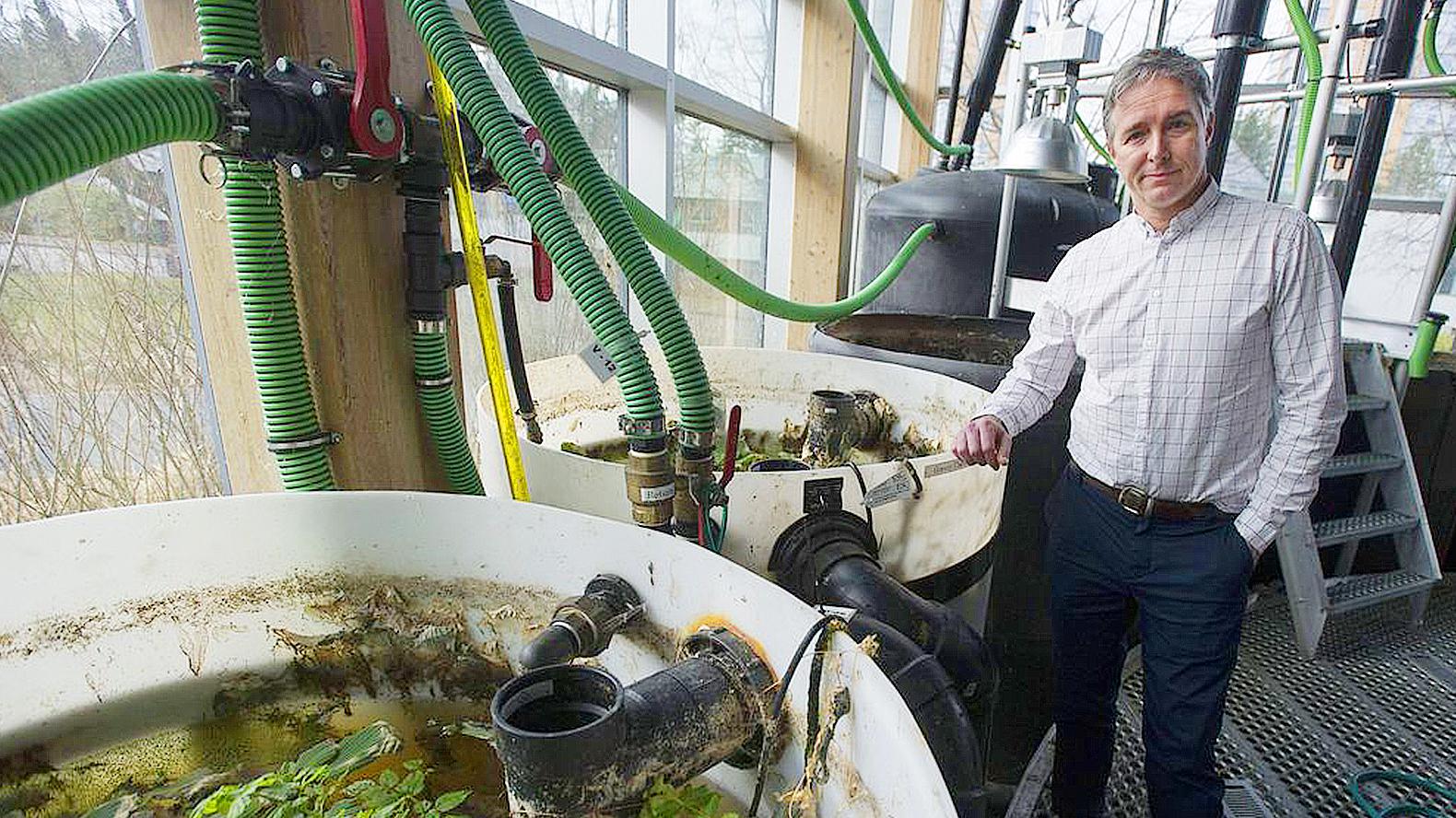
This article by Randy Shore originally appeared in The Vancouver Sun on 1 April 2019.
UBC has increased enrolment by 24,000 students over the last 20 years while reducing annual water consumption on the campus by 50 per cent, a whopping 272 million litres in total.
That is a reduction of 69 per cent per-capita for the equivalent of about 47,000-plus full-time students, said Bud Fraser, the university’s water and zero waste engineer.
With the completion of its hot water district energy system as a centrepiece accomplishment, the university is also on track to reduce greenhouse gas emissions 67 per cent by 2021.
Considering the complexity of retrofitting more than 100 buildings to switch from the vintage steam heating system first installed in 1925, the math was surprisingly simple, said David Woodson, the managing director of energy and water services.
The new hot water system was installed for just $90 million, less than half of the $190-million estimated cost to repair the steam boiler system and its 28 kilometres of decaying pipe.
“On paper, it looks brilliant and obvious, but this was not an easy project to do, in part because the steam system was already there,” he said. “People were skeptical about the costs and the savings, but we have demonstrated that it works.”
It was less obvious that the aging steam pipes were bleeding away hundreds of millions of litres of water that entered the system as steam.
“The hot water district started as an energy project, but it delivered a huge impact on water consumption,” said Fraser.
The old system also burned through one million giga-joules of natural gas annually. Over the five-year phased installation of the hot water district, gas consumption has dropped by 30 per cent, which led to $4 million in operating savings.
The campus also has a bioenergy plant that produces gas from urban wood waste, which has reduced natural gas consumption and further decreased UBC’s GHG emissions by 14 per cent.
Gas consumption may well drop further in the future as other heat sources are exploited under the university’s Water Action Plan that comes into effect this year.
Hot water systems can pick up waste heat from building exhaust, heavy lab equipment and cooling systems throughout the campus, energy that is otherwise released into the environment. Steam systems lack that flexibility.UBC’s biggest energy user — the TRIUMF particle accelerator lab — will be connected to the system in the future as a heat source.
The Point Grey campus is one of B.C.’s largest cities on a school day with 75,000 people, which allows it to operate as a full-scale urban laboratory, said James Tansey, executive director of the UBC Sustainability Initiative.
“The campus itself is an innovation platform, demonstrating what cities around the world need to do,” he said. “With total control of all the buildings, all the facilities, and all the construction … we can do things faster and we have more ability to take risks.”
The university has made steady water efficiency gains simply by following stricter building codes and relatively mundane exercises such as upgrading to low-flow toilets, replacing urinals that flush every 15 minutes whether they are in use or not and using low-flow shower heads in student residences and new construction.
There are also a handful of creative and experimental buildings that hint at the possibility of water self-sufficiency.
The CK Choi Building uses waterless composting toilets and the nutrients recovered from waste blackwater are used as fertilizer. Grey water from sinks is directed to a plant-based recycling system. The building has no connection to the sewer system.
The Centre for Interactive Research on Sustainability (CIRS) building is designed to be water self-sufficient by harvesting rainwater and reclaiming grey water to flush toilets. It has a super-efficient building envelope, solar panels and several heat recovery systems, which minimize its energy requirements.
While CIRS has the ability to treat blackwater, getting permits to use the purified water proved to be more trouble than it was worth, said Tansey.
“It can use sunlight, plants and bacteria to treat blackwater so it could be reused in the building and we proved it could be done,” he said. “But it was too much to ask from a health and safety perspective, so we never closed the loop on that.”
Some of the more exotic and expensive conservation technologies don’t make a ton of sense in B.C. where water and electricity are plentiful and cheap.
“The business case for these kinds of innovations are quite challenging in B.C. if financial considerations are the sole basis for the decision,” said Fraser.
But the combination of solar energy and self-contained water treatment demonstrated by the CIRS Building could make perfect sense in a sunny, dry climate where water is either expensive or in short supply.
UBC’s water savings defy city-to-city comparisons, because most of its inhabitants shower in the morning and cook dinner at night in another municipality. But why would we let that stop us?
Metro Vancouver has recorded a per capita water use reduction of around 20 per cent since 1997, but total water consumption in the Greater Vancouver Water District hasn’t dropped appreciably over the past 20 years.